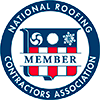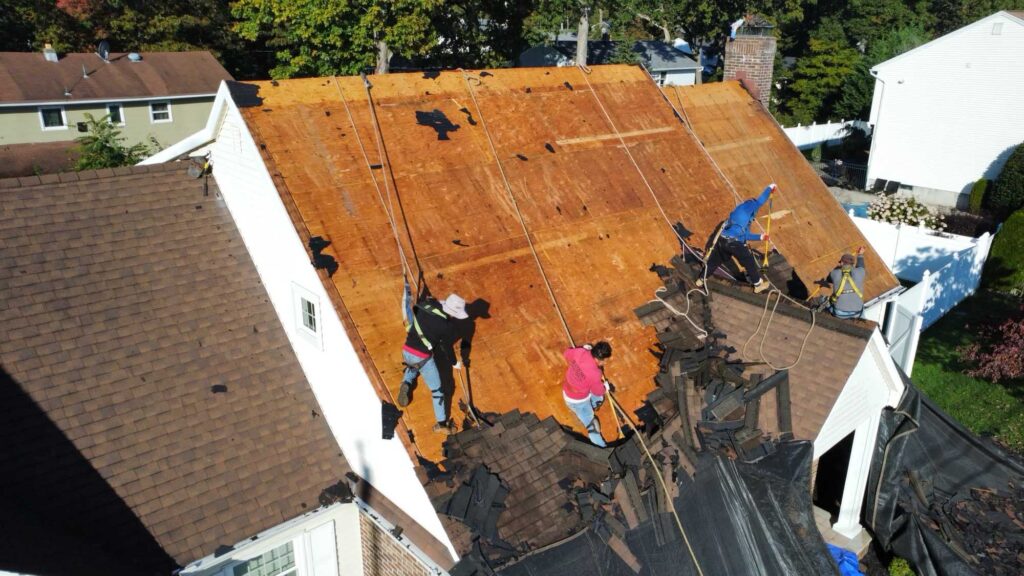How to Tell If Your Roof Damage Is Covered by Insurance in Bergen County
Dynamic Home Improvements




Air Flow Can Prevent Roof Damage
Roof damage can be stressful, especially when unexpected repairs arise due to storms, high winds, or falling debris. If you’re a homeowner in Bergen County, one of the first questions you’ll likely ask after discovering damage is: “Will my homeowner’s insurance cover this repair?”
Understanding your insurance policy, the claims process, and what factors determine coverage can help you navigate roof repairs with confidence. In this guide, we’ll break down how to determine whether your roof damage is covered by insurance, what steps to take when filing a claim, and how to ensure you get the maximum coverage available.
Understanding How Homeowner’s Insurance Covers Roof Damage
Most standard homeowner’s insurance policies include coverage for roof damage, but whether your roof repair or replacement is covered depends on a few key factors:
Types of Roof Damage Typically Covered
Insurance policies generally cover damage that is sudden, accidental, and caused by natural disasters or unforeseen events, including:
- Storm Damage: High winds, hail, and heavy rain can cause shingles to loosen, break, or be torn off. If a storm damages your roof, it is typically covered under your policy.
- Fallen Trees and Debris: If a tree branch or other debris falls on your roof during a storm, your policy should cover the repairs.
- Fire Damage: Whether caused by lightning or another accidental fire, damage to your roof from fire is almost always covered.
- Vandalism: If your roof is damaged due to an act of vandalism, your insurance company will likely cover the cost of repairs or replacement.
Types of Roof Damage Typically Not Covered
Unfortunately, not all roof damage qualifies for insurance coverage. Some common exclusions include:
- Wear and Tear: If your roof is old and deteriorating from age, normal wear and tear is not covered by insurance.
- Poor Maintenance: Insurance companies expect homeowners to maintain their roofs. Damage caused by neglect—such as ignored leaks, mold, or missing shingles—may not be covered.
- Previous Installation Issues: If your roof was improperly installed or has manufacturer defects, your insurance company may deny your claim.
How to Determine If Your Roof Damage is Covered
Before filing a claim, it’s essential to evaluate the damage and compare it with your policy coverage. Follow these steps to determine if you qualify for insurance reimbursement:
Step 1: Review Your Insurance Policy
The first step in determining coverage is to review your homeowner’s insurance policy. Look for sections related to:
- Dwelling Coverage: This covers damage to the structure of your home, including the roof.
- Exclusions: This section outlines what types of damage are NOT covered.
- Deductible: Your deductible is the amount you must pay out of pocket before your insurance kicks in. If your roof repair costs less than your deductible, it may not be worth filing a claim.
Step 2: Inspect the Roof Damage
Conduct a visual inspection (if safe) or hire a professional roofing contractor to assess the damage. Look for:
- Missing or damaged shingles
- Leaks or water stains on ceilings
- Visible holes or punctures
- Debris or tree limbs on the roof
Documenting the damage is crucial for your insurance claim. Take clear, high-resolution photos and videos from multiple angles.
Step 3: Determine the Cause of the Damage
Insurance coverage is heavily dependent on the cause of damage. If it was caused by a covered event like a storm, you have a strong case. However, if it resulted from aging or neglect, your claim may be denied.
Filing an Insurance Claim for Roof Damage in Bergen County
If you’ve determined that your roof damage is covered, the next step is filing a claim. Here’s how to go about it:
Step 1: Contact Your Insurance Company
Call your insurance provider as soon as possible to report the damage. They will provide guidance on the next steps and inform you of any documentation required.
Step 2: Schedule an Inspection with an Adjuster
Your insurance company will send an adjuster to inspect the damage. The adjuster will:
- Assess the extent of the damage.
- Determine the cause of the damage.
- Estimate the cost of repairs or replacement.
Step 3: Get an Independent Roof Inspection
While insurance adjusters work for your insurer, hiring an independent roofing contractor ensures you get an unbiased assessment. A certified roofing professional can provide a second opinion and a detailed roof repair estimate to support your claim.
Step 4: Submit Documentation
Provide your insurer with:
- Photos and videos of the damage.
- Inspection reports from your contractor.
- An estimate for repairs or replacement.
Make sure all communication with your insurance company is documented in writing.
Step 5: Review the Settlement Offer
Once your claim is processed, your insurance company will issue a settlement offer. This will outline how much they’re willing to cover.
- If the offer covers all necessary repairs, you can proceed with fixing your roof.
- If the offer is too low or denied, you have the right to appeal the decision or request a second inspection.
Tips for Maximizing Your Insurance Payout
Act Quickly
Most insurance policies require claims to be filed within a certain timeframe after the damage occurs. Delaying your claim can result in denial.
Work with a Reputable Roofing Contractor
Choose a licensed and insured roofing contractor with experience handling insurance claims in Bergen County. A professional roofer can provide:
- A detailed damage assessment.
- A competitive estimate that aligns with insurance standards.
- Assistance in communicating with your insurance company.
Keep Records of Maintenance
If your roof was well-maintained before the damage, you’re more likely to receive full coverage. Keep records of past roof inspections, repairs, and maintenance.
Don’t Accept a Lowball Offer
Insurance companies may offer less than the true cost of roof repairs. Get a second opinion from your roofing contractor and be prepared to negotiate.
Consider Hiring a Public Adjuster
If you feel your insurance company is undervaluing your claim, hiring a public adjuster can help. These professionals work on behalf of homeowners to negotiate fair settlements.
When to Repair vs. Replace Your Roof After a Claim
Once your insurance claim is approved, you may need to decide between repairing and replacing your roof.
When to Repair:
- The damage is minor or localized (e.g., missing shingles, small leaks).
- Your roof is less than 10-15 years old and still in good condition.
- The cost of repair is significantly lower than the replacement cost.
When to Replace:
- Your roof has severe structural damage.
- The roof repair cost is close to or exceeds 50% of the replacement cost.
- Your roof is old and nearing the end of its lifespan.
If your insurance covers a full replacement, this may be the best long-term investment.
What to Do If Your Roof Insurance Claim Is Denied
Even if your roof damage seems to qualify for insurance coverage, there’s always a chance your claim may be denied. Insurance companies often reject claims due to various reasons, such as lack of evidence, policy exclusions, or pre-existing conditions. If you find yourself in this situation, don’t panic—there are steps you can take to fight the denial and get the coverage you deserve.
Common Reasons for Claim Denials
If your insurance company denies your claim, they should provide a written explanation. Some common reasons include:
- Normal Wear and Tear: If the adjuster determines your roof damage is due to aging rather than a sudden event, your claim may be denied.
- Lack of Maintenance: If there’s evidence of neglect, such as missing shingles or long-term leaks that were ignored, your insurance may not cover repairs.
- Insufficient Documentation: If you didn’t provide clear photos, inspection reports, or other supporting documents, the insurer may argue there isn’t enough proof of covered damage.
- Damage Not Covered by Policy: Some policies exclude specific causes of damage, such as floods, earthquakes, or certain types of storm damage.
Steps to Take After a Claim Denial
- Review the Denial Letter Carefully: Look at the specific reasons the insurance company gave for rejecting your claim. Compare their explanation with your policy’s terms to see if their reasoning is valid.
- Gather Additional Evidence: If your claim was denied due to a lack of evidence, take additional photos and videos of the damage. Request a second opinion from a certified roofing contractor who can assess the damage and provide a detailed report.
- Request a Reinspection: If you believe your claim was unfairly denied, ask your insurance company for a reinspection by a different adjuster. Be present during this inspection, along with your roofing contractor, to ensure all damage is noted.
- File an Appeal: Many insurance companies allow homeowners to appeal a denied claim. Provide all new evidence, contractor reports, and maintenance records to strengthen your case.
- Consider Hiring a Public Adjuster or Attorney: If you’re still struggling to get your claim approved, a public adjuster or insurance attorney can negotiate with your insurance company on your behalf. Public adjusters specialize in maximizing insurance payouts and can often help overturn wrongful denials.
By taking these steps, you improve your chances of securing the insurance payout needed for your roof repairs.
How to Prevent Future Roof Damage and Reduce Insurance Claims
While insurance can help cover unexpected roof repairs, taking proactive steps to prevent damage can save you time, stress, and money in the long run. Proper maintenance and preventive measures ensure that your roof stays in excellent condition, reducing the likelihood of needing to file a claim.
Schedule Regular Roof Inspections
- Have a professional roofing contractor inspect your roof at least twice a year—once in the spring and once in the fall.
- After major storms, conduct visual inspections to check for missing shingles, dents, or debris damage.
Keep Your Gutters Clean
- Clogged gutters cause water to back up under shingles, leading to leaks and water damage. Clean them at least twice a year and ensure downspouts direct water away from your foundation.
- Install gutter guards to prevent leaves and debris buildup.
Trim Overhanging Trees
- Falling branches during storms can cause severe roof damage. Trim trees near your home regularly to prevent branches from scraping or falling on your roof.
Address Small Roof Repairs Immediately
- If you notice a missing shingle, damaged flashing, or a small leak, don’t wait to fix it. Small issues can escalate into major structural damage if ignored.
Improve Attic Insulation and Ventilation
- Proper attic ventilation and insulation prevent ice dams in winter and heat buildup in summer, both of which can cause roofing materials to deteriorate prematurely.
- Make sure vents are unobstructed and that insulation is evenly distributed.
Choose High-Quality Roofing Materials
- If you’re replacing your roof, consider impact-resistant shingles or metal roofing, which provide superior durability in Bergen County’s unpredictable weather.
- Select shingles that are rated for high winds and heavy storms.
Work with a Trusted Local Roofing Contractor
- A reputable Bergen County roofing company understands local weather conditions and can help maintain your roof to withstand harsh elements.
- Establish a relationship with a trusted contractor so they can provide ongoing maintenance, inspections, and repairs.
By following these preventative measures, you can minimize future roof damage, keep roof repair costs low, and reduce the need for insurance claims. A well-maintained roof not only protects your home but also enhances its overall value and longevity.
Feel Confident with Dynamic Home Improvements Every Step of the Way
Determining whether your roof damage is covered by insurance can be a complicated process, but knowing the steps ahead of time can save you time, money, and stress. If your roof was damaged by a covered event, such as a storm or fallen tree, you likely qualify for financial assistance from your insurance provider.
To increase your chances of a successful claim: 



If you need expert guidance on your roof damage assessment and insurance claim, contact Dynamic Home Improvements. Our experienced team can help you navigate the claims process, provide professional repair estimates, and ensure you receive the maximum coverage you deserve.
